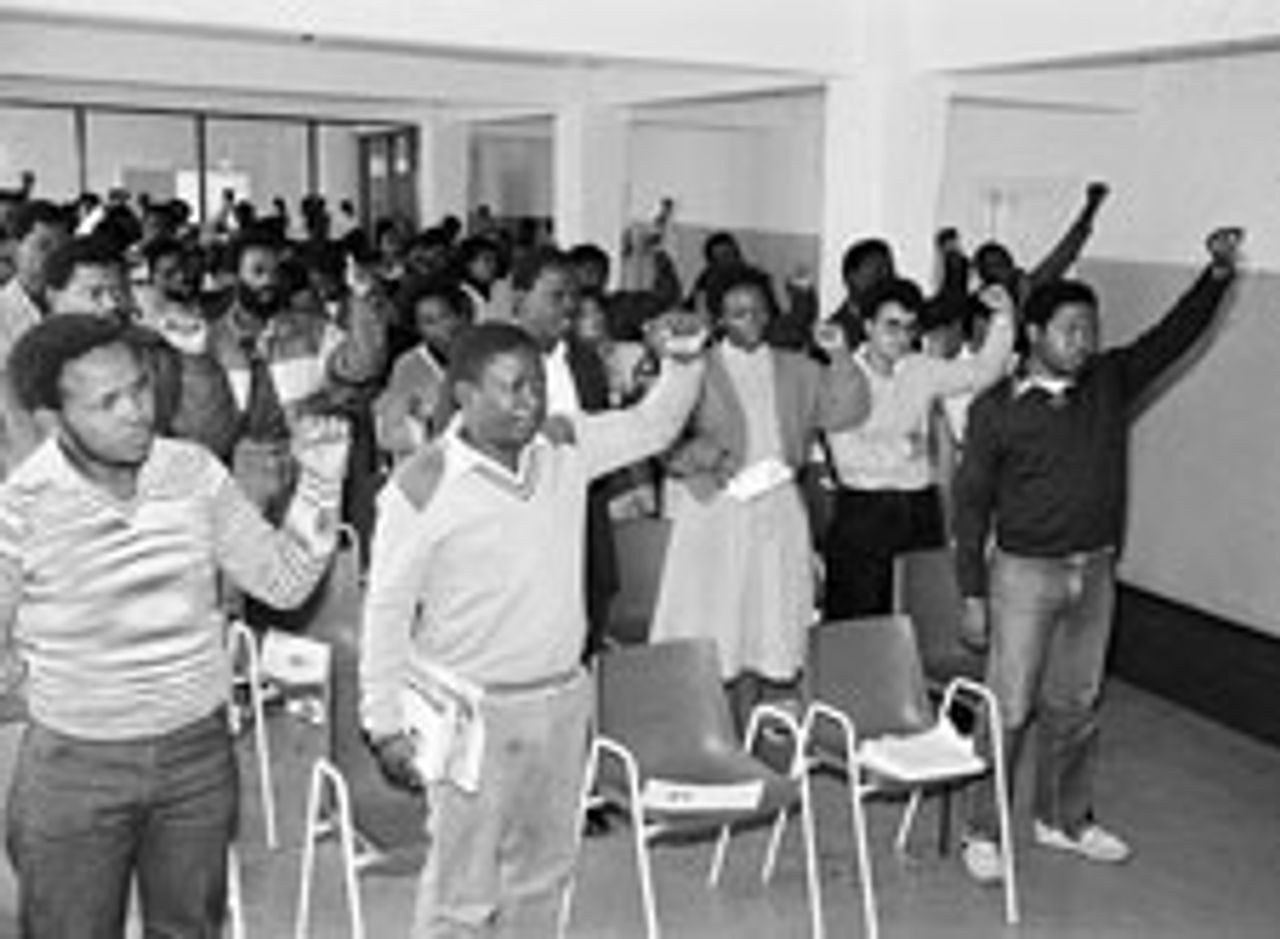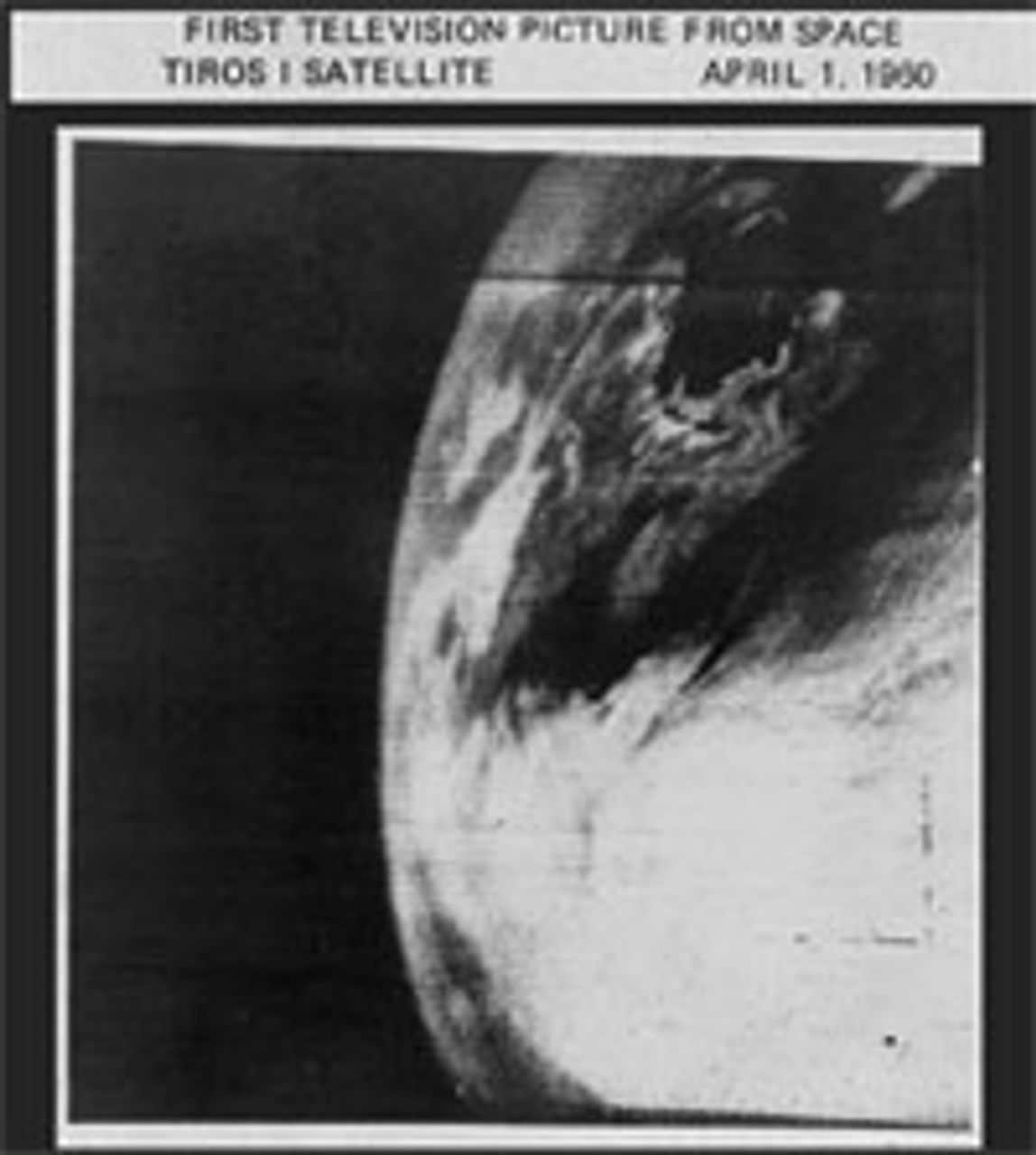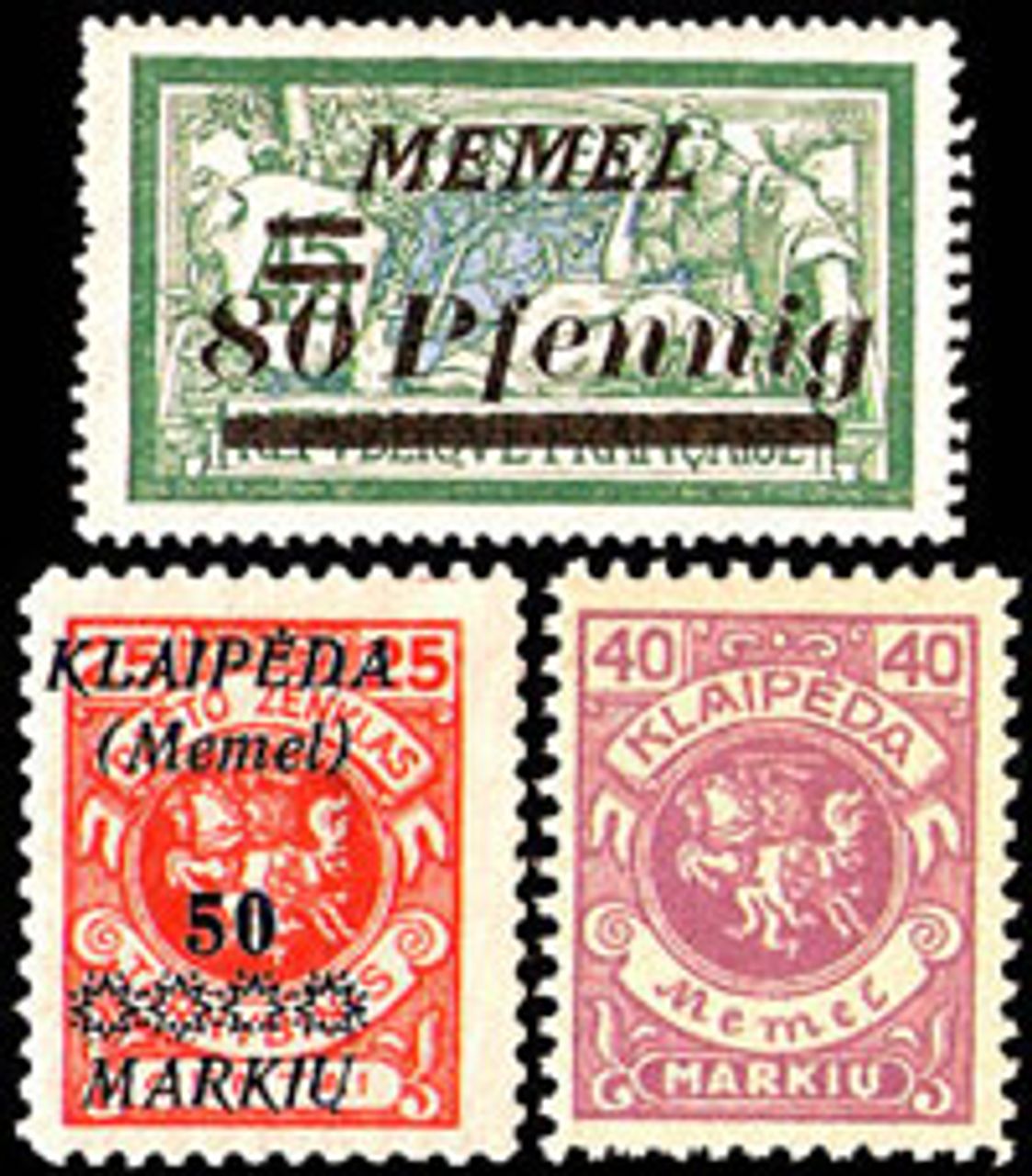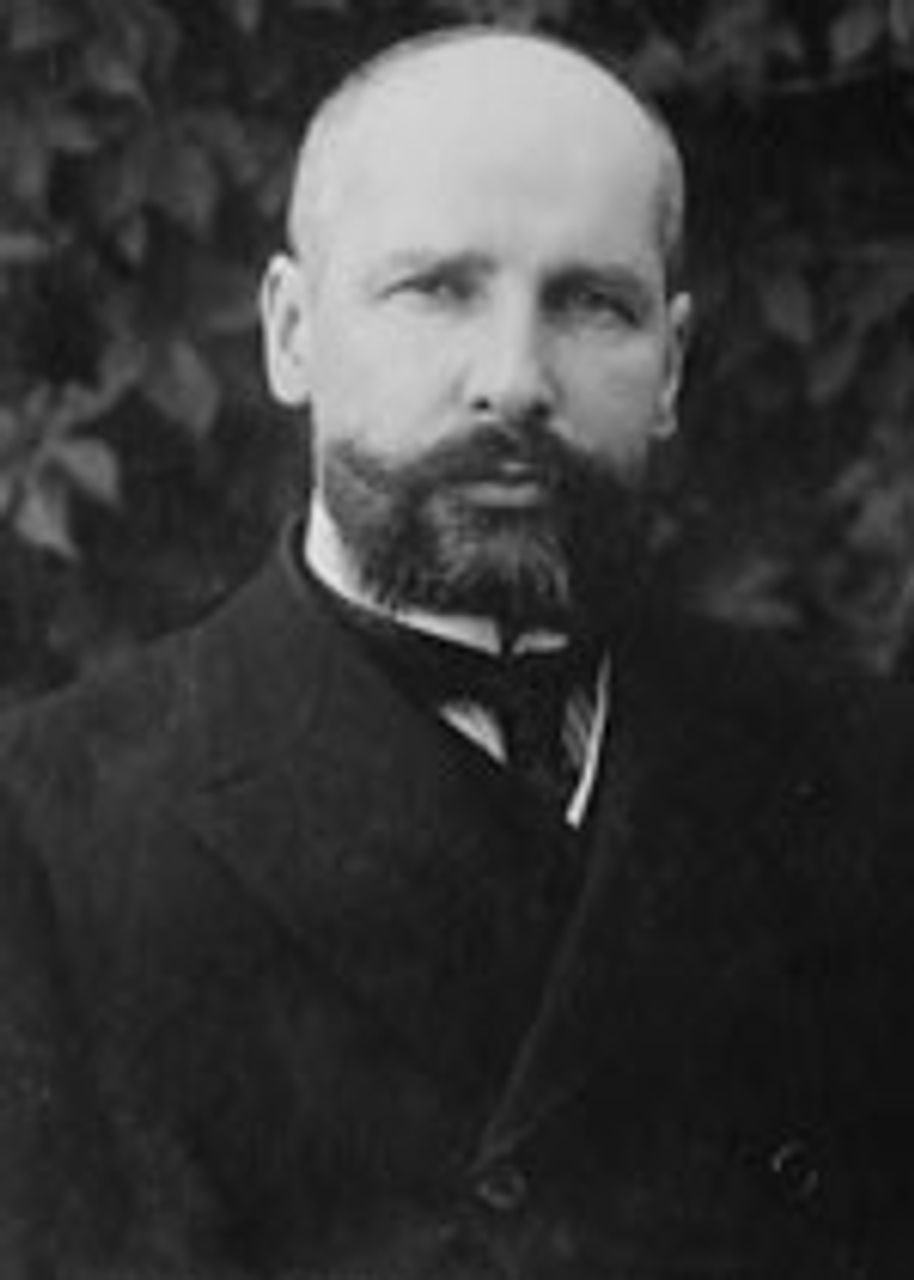This Week in History provides brief synopses of important historical events whose anniversaries fall this week.
25 Years Ago | 50 Years Ago | 75 Years Ago | 100 Years Ago
25 years ago: South Africa outlaws political opposition
 South African workers celebrate
South African workers celebrateMay Day, 1985
On March 29 the South African government outlawed public gatherings by 29 different political groups, among them the largest non-parliamentary party, the United Democratic Front (UDP). The largest black party, the African National Congress, was already outlawed.
Tension was high after the killing the previous week of 19 unarmed black protesters in Uitenhage, which took place 25 years after the notorious Sharpeville massacre in which 69 blacks were gunned down. The clampdown on opposition affected the Eastern Cape region and areas near Johannesburg, and included a ban on announcing strikes and work stoppages. Millions were affected; the UDP by itself claimed a membership of 1.5 million.
President P.W. Botha warned of “appropriate steps” to follow, and soon dispatched the military to join in police operations against the population. When thousands gathered in Port Elizabeth at a funeral for four people murdered by South African authorities in earlier violence, police launched tear gas and rubber bullets, injuring at least 10 and killing one more. Some 30,000 attended a similar funeral in Zwide. Funerals provided one of the few venues at which blacks could legally gather in public.
The growing strength and combativeness of black workers in South Africa, as well as the economic stagnation of the country, caused increasing concerns in Western capitals that minority white rule—which had served Western financial interests so well in the 1950s and 1960s when South Africa had a growth rate second only to Japan—was no longer tenable. This view was not shared by the Reagan administration, which defended the latest crackdown.
50 years ago: First weather satellite launched
 The first weather image from space
The first weather image from spaceThe US launched the first weather satellite, known as TIROS-1, from Cape Canaveral in Florida on April 1, 1960. TIROS-1, which stands for Television Infra-Red Observation Satellite, was equipped to send back photographs of weather patterns from an altitude of 450 miles.
The same day as its launch, television audiences observed for the first time weather satellite photos. During its 78 days of operation, TIROS provided nearly 23,000 photographs, among them images proving the spiral nature of storm systems. Only 19 inches tall and 42 inches in diameter, the satellite was equipped with two television cameras and batteries powered by solar cells.
TIROS was the first satellite to have as its central purpose the advancement of practical activities on earth. One camera surveyed up to 800 square miles of the earth’s surface, and the other only 32 square miles. The broader range view served the field of meteorology; the more narrow range was intended to prepare for future military reconnaissance from space.
75 years ago: Tensions between Germany and Lithuania over Memel territory
 Stamps from Memel territory
Stamps from Memel territoryTensions between Germany and Lithuania continued to mount this week in 1935 following the previous week’s sentencing in Kaunas, Lithuania of 91 Nazis who had been convicted of conspiring to take control of the Memel territory (also known as the Klaipda region) on behalf of Germany.
Along with Danzig and the Saar territory, the Treaty of Versailles had placed the Memel territory, the German region between the Memel River and the Lithuanian border, under the jurisdiction of the League of Nations following the First World War. During the Klaipda Revolt of 1923, Lithuania seized control of the territory and forced the League of Nations to recognize its authority over the region.
The Nazi leadership in Germany, eager to return territory lost to Germany during the First World War and extend its reach further into Eastern Europe, seized on the trial of the Memel Nazis to stir up nationalist sentiments against Lithuania, organizing protests against the trial and sentencing. A propaganda campaign was launched which led to Lithuanian authorities protesting that Germany was broadcasting a “campaign of hate and lies” against the Lithuanian people.
Broadcasts of anti-Lithuanian propaganda on German radio stations which could be heard in Lithuanian led to protests throughout that country. At least 4,000 anti-Nazi students gathered at the German embassy in Kaunas for a demonstration and were repelled by police wielding high-pressure fire hoses.
In response to what it called “German interference in Lithuania’s domestic affairs,” the Lithuanian government announced its intentions to protest to the League of Nations, insisting that the League recognize Lithuania’s complete sovereignty over the Memel territory and that it repeal statutes placing the territory under the administrative jurisdiction of a commissioner representing the League.
100 years ago: Russian Duma strips Finland of autonomy
 Pyotr Stolypin
Pyotr StolypinThis week in 1910 the Russian Duma approved a law dictated by Prime Minister Pyotr Stolypin stripping from the Grand Duchy of Finland autonomy over any matter of “importance to the Empire.”
Finland had gained a degree of independence as a result of the Russian Revolution of 1905, which the local bourgeoisie had used to promote domestic economic interests and establish a relatively democratic constitution, among other things becoming the first nation to grant women the right to vote. Stolypin’s “reform” was part of a broader restoration of full autocratic Czarist control. Among other measures, the bill canceled the Finnish Diet’s control over laws related to public gatherings, the press, commerce, and the criminal code.
Lenin wrote most perceptively on the measure: “Finland took advantage of the Russian revolution to secure a few years of freedom and peaceful development. The counter-revolution in Russia is making haste to utilise the complete lull ‘at home’ to take away as much as possible of Finland’s gains. History, as it were, is demonstrating by the example of Finland that the famous ‘peaceful’ progress, so idolized by all philistines, is just one of those brief, unstable, ephemeral exceptions which conclusively prove the rule... Finland could only breathe freely when the working class of Russia rose in a gigantic mass and gave a shock to the Russian autocracy. And it is only by joining the revolutionary struggle of the masses in Russia that the Finnish worker can now seek the way to deliverance from the onslaught of the Black-Hundred bashi-bazouks.”
